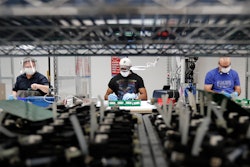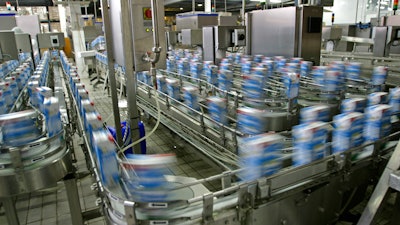
As the COVID-19 pandemic has progressed, so have the effects on supply chains across industries. Brands are feeling what is called the bullwhip effect, a supply chain phenomenon that has plagued the consumer-packaged-goods (CPG) industry and caused major disruptions and allocation issues, especially in the food manufacturing space.
The bullwhip effect causes massive miscommunication between suppliers and retailers as the demand for products increase and decrease exponentially in a short amount of time. As suppliers are fulfilling the demand of yesterday, the demand of today could be completely different from that of tomorrow.
Food Manufacturing recently spoke with Ronen Lazar, CEO and co-founder of INTURN — a platform helping companies sell their excess inventory remotely and more efficiently — how the bullwhip effect is impacting the supply chain now, how it’ll impact the future and what brands can do to combat its effects. See our discussion below:
FM: Why is excess inventory such a major issue for food & beverage manufacturers?
 Lazar
Lazar
FM: What are the current causes of excess inventory?
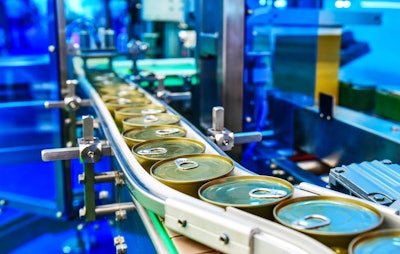 iStock
iStock
But now, because of COVID-19’s impact on consumer spending habits, future demand is a total guessing game. Companies are having a hard time aligning with that volatility, leading to the overproduction that causes the excess inventory.
FM: Amid COVID-19, what do food manufacturers find most challenging about controlling their excess inventory levels?
Lazar: The primary challenge is the unknown. A lot of the products distributed in bulk are considered “essential” and needed to survive. You find them in grocery stores, in convenience stores and restaurants/bars. The initial phase of the pandemic proved to show there was more demand for these products and less supply. In April, however, demand decreased to pre-COVID numbers, but then spiked again in May. And the demand was just for certain products — not across the board. This nature of volatility from month to month is a major obstacle. How can brands realistically plan when trends are inconsistent?
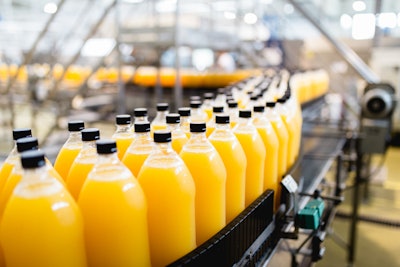 iStock
iStock
FM: What steps can food & beverage companies take to overcome that volatility? And how does the use of advanced technology factor into the equation?
Lazar: Managing the volatility requires enhanced visibility. Companies need a firm grasp on what products should fall under the essential inventory umbrella -- meaning it’s a product on everyone’s shopping list whenever they make a grocery store run. For example, toilet paper spiked in demand when the pandemic first started. We all saw the pictures of shoppers hoarding it. People were filling up their entire cars with rolls of Charmin! It was flying off the shelves to the point that supply chains had a hard time fulfilling demand. Although after a few weeks, as fears of leaving the house began to subside, that demand took a steep decline. The companies who weren’t out in front of the sudden change ended up oversupplying. So with that being said, the level of real-time visibility on what products are and aren’t selling will be key.
From a technology standpoint, digital readiness is essential. How effective can companies be when a majority of their employees are operating remotely during the pandemic? Using systems that streamline the communication and collaboration process between teams will be critical. There are tech solutions that can enable companies to inform customers about available products in real-time. These types of innovative techniques will be critical as it relates to the inventory lifecycle and excess inventory management.
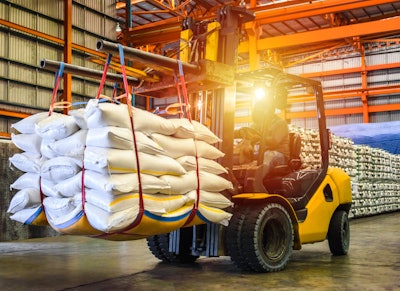 iStock
iStock
FM: When excess inventory is mismanaged, it creates food waste that is exceedingly harmful to the environment, which casts a negative light on food & beverage companies in the eyes of consumers. What are the damaging effects of that negative reputation?
Lazar: It’s exactly that -- a negative reputation that impacts sales, profit potential and customer loyalty. A majority of Millennial and Gen Z consumers emphasize sustainability during the buying process. They tend to align with brands that make public efforts to preserve the environment. So in food & beverage, specifically, there’s been a big push on sustainability.
Certain measures can be taken to reduce waste internally. A lot of it already happens on the outside -- making sure products are manufactured in the right factories to reduce the carbon footprint. Although with systems in place that prioritize product visibility, companies can decrease the rate of slow-moving inventory that turns into waste. With visibility, you’re then able to take actionable steps to actually make sure it ends up in the market.







